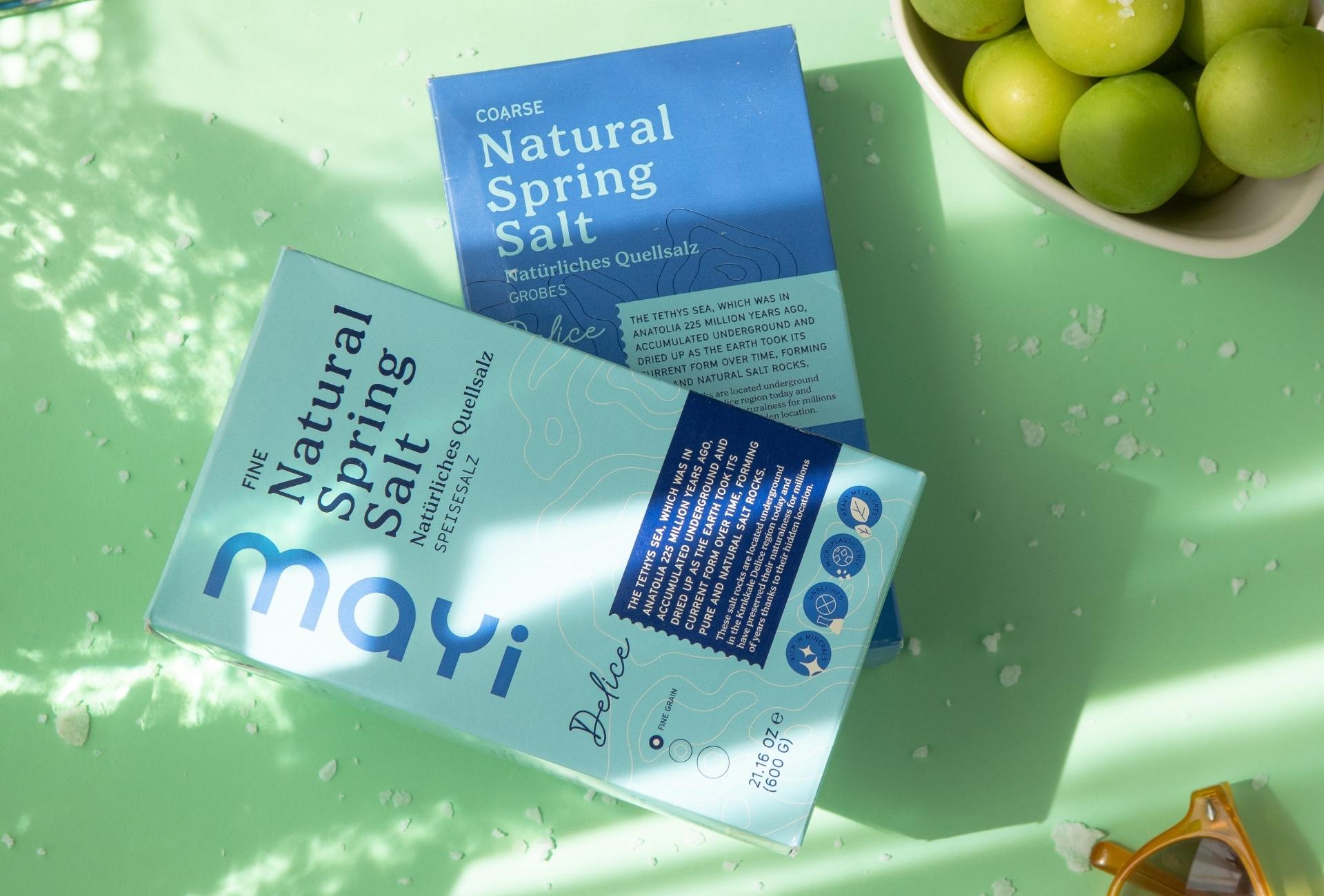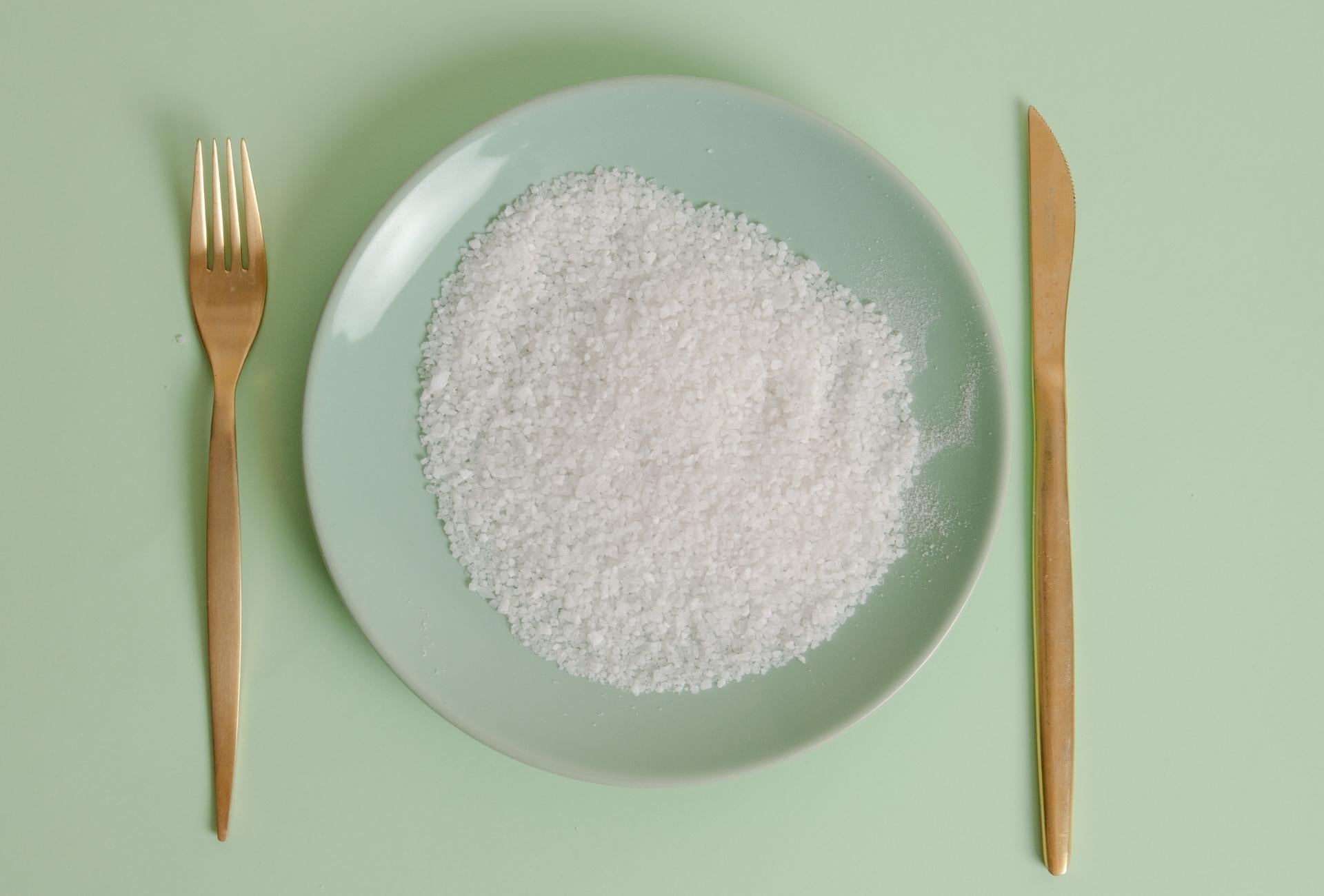With the formation of the current shape of the Earth, sea waters have accumulated underground, dried up, and formed pure and natural salt rocks. Thanks to their hidden locations, these salt rocks have preserved their naturalness for millions of years. The salt, formed by the hot water emerging from the fault line dissolving these salt rocks and collecting red soil minerals, surfaces while retaining all its flavor and naturalness.
What is Spring Salt?
The highest quality salts in the world are natural spring salts. Natural spring salts are formed when rock salts underground dissolve with hot water and emerge to the surface through fault lines. This spring salt, found in limited quantities worldwide, is known to have one of the highest mineral contents among salt types. It contains 84 different minerals, including those essential for our body. Spring salt benefits include enhancing the flavor of dishes, providing a natural source of minerals, and offering potential health benefits due to its purity and unprocessed nature. The mineral content of spring salt includes a diverse range of essential minerals, contributing to its nutritional value and making it a beneficial choice for those seeking a natural source of key nutrients. Moreover, this natural salt, which does not contain insoluble substances like sediment or silica, is perfect for meeting the body's needs for minerals and salt.
The Origins and Extraction of Spring Salt
Spring salt coming from ancient underground reservoirs forms over thousands of years. It is preserved deep beneath the Earth's surface, thousands of kilometers below, away from environmental pollution, for millennia. During all this time, it enriches itself in terms of minerals from the underground soils. It naturally emerges to the surface and undergoes a meticulous production process.
Health Benefits of Spring Salt
Natural salt spring is almost like a miracle of nature. The benefits of this miracle include:
- Strengthens the immune system
- Regulates the digestive system
- Has anti-edema properties
- Accelerates blood circulation
- Beneficial for rheumatism and muscle and bone pain
- Helpful in sleep irregularities
- Balances blood sugar
 Culinary Uses of Spring Salt
Culinary Uses of Spring Salt
It is possible to say the following about the use of natural spring salt in cooking, which stands out with its purity and naturalness:
- It enriches dishes with its rich mineral content, enhancing their nutritional value.
- It is recommended to add spring salt to dishes after the cooking process is completed. This is to prevent the minerals in the salt from evaporating and decreasing during the cooking process.
- Due to the lower sodium content of spring salts compared to other salts, they increase the saltiness of dishes without imparting a strong taste of saltiness.
- It highlights the natural flavor of the dishes.
Comparing Spring Salt with Other Salts
The health advantages of spring salt include its rich mineral content, potential benefits for the immune system, digestive regulation, and the absence of environmental pollutants often found in other types of salt.
Spring Salt vs Sea Salt
Spring salt and sea salt differ in their origin and composition. While organic spring salt is obtained from natural springs or underground salt deposits, sea salt is derived from the evaporation of seawater. The mineral content and flavor profile of these salts can vary, influencing their use in culinary applications.
Sea salt production is relatively easy and widely available. However, oceans are susceptible to environmental pollution and industrial waste, contaminating sea salt with these chemicals. To remove impurities, refining processes disrupt its natural composition. Spring salts, often originating deep underground far from human settlements, remain unaffected by environmental pollutants, preserving their purity.
Spring Salt vs Himalayan Salt
With the gradual shaping of the Earth's current form, salt accumulated underground and dried up, forming pure and natural salt rocks. To use these rock salts on our tables, they are blasted with dynamite. As a result, heavy metals mix with the salt.
On the other hand, spring salt is formed as natural underground water circulates among rock salts, absorbing their salinity. It reaches the surface through natural processes and contains no sediment or waste, including heavy metals.
Spring Salt vs Epsom Salt
Spring salt and Epsom salt are two different types of salts with distinct properties and uses. Spring salt is typically obtained from underground salt deposits and is rich in minerals and elements. Spring salt finds applications in various areas, including culinary uses as a flavor enhancer in cooking and seasoning, as well as in bath salts for relaxation purposes.
Epsom salt is a compound containing magnesium, sulfur, and oxygen. It is not obtained from natural springs but is usually manufactured. It is used in gardening and certain health and beauty applications, known for its muscle-relaxing properties. Both salts have unique compositions and applications.
Where to Buy Quality Spring Salt
Spring salt is a rare type of salt found scarcely on Earth. Unlike sea salts, it remains unaffected by environmental pollution. It does not contain sediment, unlike rock salts. Mayi Salt is a liquid form of spring salt that emerges underground. It is naturally left to dry in the sun and then packaged under hygienic conditions. Compared to regular table salts, it has a lower saltiness level. Spring salt in cooking serves as a versatile seasoning, enhancing the flavor of dishes and providing a natural source of minerals to elevate the overall culinary experience. When added to dishes, it enhances their flavor without making them overly salty. Spring salt recipes offer a delightful way to explore the versatile use of this natural seasoning in various culinary creations, enhancing the flavor profile of dishes with its rich mineral content. As it is unrefined, it is rich in minerals and elements. You can purchase spring salts from the websites of companies that sell them. They are also available in chain supermarkets and online retail platforms like Amazon.




